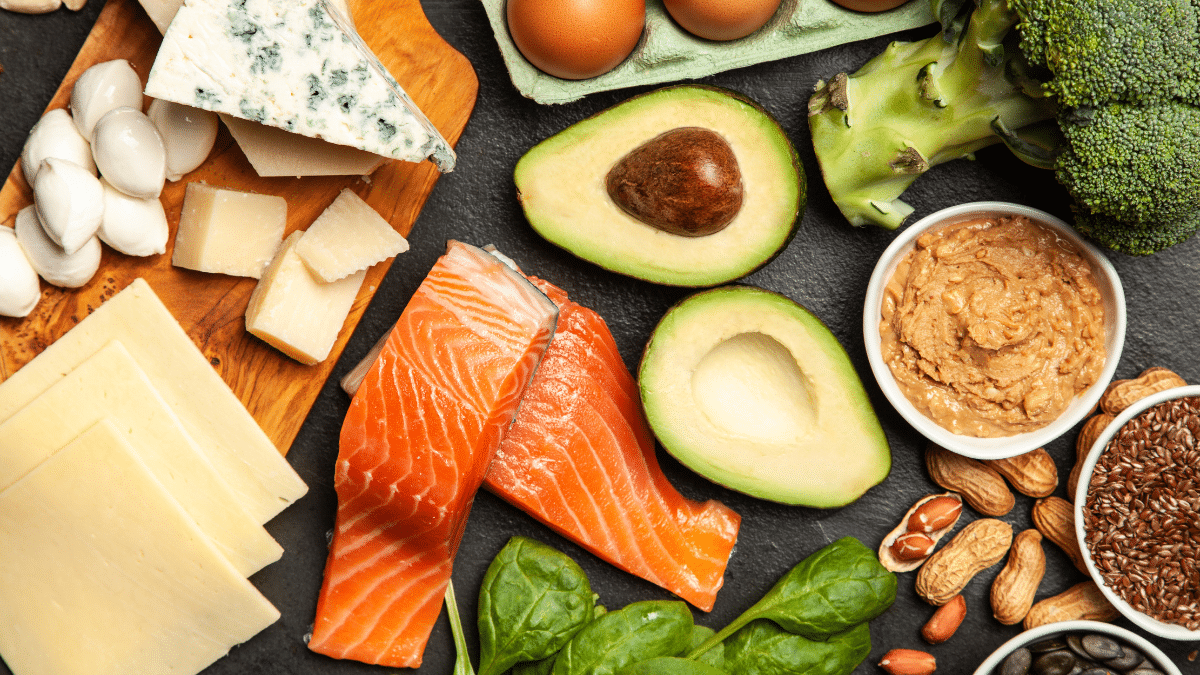The debate between Keto vs Low Carb for muscle building is ongoing. Both keto and low-carb diets claim to help with fat loss and energy, but how do they impact muscle growth? Learn the key differences and which one fits your goals.
💪 Introduction
If you’re trying to build muscle while managing your carb intake, you’ve probably come across two big trends: keto and low-carb.
At first glance, they might seem similar — both restrict carbohydrates, emphasize fats, and promote steady energy. But when it comes to muscle growth, the differences between keto and low carb can significantly affect your results.
In this FaithNFIT guide, we’ll break down the core distinctions between keto vs low-carb diets, explore how each impacts muscle-building potential, and help you choose the approach that best supports your body, goals, and faith-based fitness journey.
🧠 The Basics: What’s the Difference?
🥓 Keto (Ketogenic Diet)
- Carbs: Typically 20–50g/day
- Fat: 70–75% of daily calories
- Protein: Moderate (20–25%)
- Goal: Enter ketosis — a metabolic state where your body uses fat (ketones) for fuel instead of glucose
🍳 Low-Carb Diet
- Carbs: 50–150g/day (more flexible)
- Fat: Moderate to high
- Protein: Moderate to high
- Goal: Reduce carb intake to improve blood sugar control, energy, and body composition — not necessarily enter ketosis
🧬 How They Affect Muscle Growth
✅ Keto for Muscle Building
- Can work if you’re adapted to fat as fuel
- May preserve lean mass during fat loss
- Can be limiting for explosive training and high-volume workouts (carbs fuel performance)
- May lower insulin — reducing fat gain, but also blunting anabolic signaling
💡 Best for: Cutting phases, people sensitive to carbs or insulin spikes
✅ Low-Carb for Muscle Building
- Allows more training fuel than strict keto
- Supports muscle protein synthesis with higher protein intake
- Easier to sustain long-term
- Offers metabolic flexibility — some carbs around workouts for better performance
💡 Best for: Lean bulks, body recomposition, active lifters who still want fat control
⚖️ Key Comparison Table
| Feature | Keto | Low-Carb |
|---|---|---|
| Carbs/day | 20–50g | 50–150g |
| Ketosis | Required | Optional |
| Best for | Fat loss, cutting | Recomp, lean bulking |
| Muscle building potential | Moderate (with adjustments) | Higher |
| Performance | May decline short-term | More consistent |
🍽️ Meal Plan Examples
🍳 Keto Muscle-Building Day
- Eggs with avocado and ground beef
- Chicken thighs with olive oil + leafy greens
- Salmon with asparagus and MCT oil
- Nuts and a protein shake (low-carb)
~2,800 kcal, 75% fat, 20% protein, 5% carbs
🍗 Low-Carb Muscle-Building Day
- Scrambled eggs with spinach and sweet potato
- Grilled chicken with brown rice and avocado
- Whey protein shake + banana (post-workout)
- Steak with roasted veggies and olive oil
~2,800 kcal, 40% fat, 35% protein, 25% carbs
🙏 FaithNFIT Perspective
There’s no one-size-fits-all answer in faith or fitness. What matters is choosing a path that helps you steward your body well — with consistency, discipline, and gratitude.
“Whether you eat or drink, or whatever you do, do it all to the glory of God.” – 1 Corinthians 10:31
Whether you go keto or low-carb, your ultimate goal is strength with intention, not restriction for vanity.
✅ Key Takeaways
- Keto is more restrictive but useful for fat-focused phases or metabolic conditions
- Low-carb offers more flexibility and better supports muscle growth and intense training
- Your choice should depend on your training style, recovery, and energy needs
- Fuel your body like the temple it is — with clarity and purpose
📎 Latest Articles:
- Keto vs Low Carb for Muscle Building: What’s the Real Difference?
- Overhead Press vs Lateral Raises: Which Builds Broader Shoulders?
- Top Natural Remedies to Reduce Face Puffiness After Workouts
- 5 Easy High-Protein Snacks for Muscle Recovery on Busy Days
- Cold Water Face Therapy: Benefits for Skin, Stress & Recovery
Subscribe now and get a 14-day free trial workout app for iPhone users.





